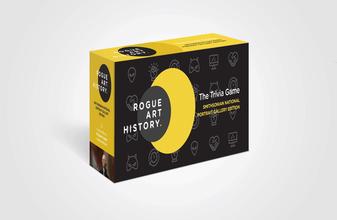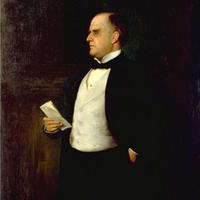More about Adolf Felix Müller-Ury
- All
- Info
- Shop
Works by Adolf Felix Müller-Ury

Contributor
If you were a member of the U.S. elite during the era Mark Twain ironically dubbed the Gilded Age, you either knew or hired the great portraitist Adolfo Müller-Ury.
He was, in some ways, the last O.G., a holdout in a tradition going back to ancient times, long before the idea of Europe, and an unusual man who could make you look more like the Mona Lisa than you ever thought you would. Müller-Ury, born Felice Adolfo Müller in Airolo, Switzerland, was the sixth of the nineteen children born to Genovefa Lombardi Müller and Carl Alois (Luigi) Müller, most of whom survived childhood. Carl Alois (Luigi) Müller was a judge with a name and coat of arms stretching back nine hundred years in German history. They spoke Swiss-German and Ticinese Italian at home, and worshipped at the Catholic Santi Nazario e Celso church, which Carl Müller helped to rebuild after a fire. In Europe, Müller-Ury began soaking up the tradition of art from a number of great teachers, including the sculptor Vincenzo Vela, at the Munich Academy. At twenty, he went to Rome, where he studied and copied the work of the Old Masters for about two years, thanks to the suggestion of local artist Antonio Ciseri.
Now he was ready to go Stateside, where business was booming. He stayed in Milwaukee, Chicago, and St. Paul, and got portrait commissions from railroad magnate James J. Hill. In the U.S., Müller-Ury played around with his name, signing his works all kinds of different ways before deciding that people weren't going to print an umlaut over his name, much less learn what an umlaut is. Even today, the most popular understanding of the umlaut in the U.S., even among those of us of German ancestry, is its deployment in the names of rock bands. Mötley Crüe's Vince Neil was flummoxed, for example, by a crowd of German fans, who understood the umlaut, chanting, "Mutley Cruh! Mutley Cruh!" A fictional rocker, played by Michael McKean, said the umlaut is "like a pair of eyes. You're looking at the umlaut, and it's looking at you." Eventually, Müller-Ury dropped the umlaut, signing his work A. Muller-Ury, so as not to have to educate impatient potential clients.
Nobody has done more than Stephen Conrad to maintain the name of Müller-Ury in recent years. Taking the opportunity to swoop up some expired copyrights, Conrad has shared information about dozens and dozens of Müller-Ury masterpieces on his website, which offers exclusive and detailed information for free. In terms of tour de forces, Conrad's art research is right up there with Georgia O'Keeffe's desert paintings, or anything Beyonce's ever done.
Müller-Ury's subjects include Presidents McKinley and Wilson, Pasadena railway don Henry Huntington, Gen. Ulysses S. Grant, super-dealer and close friend Joseph Duveen, 1st Baron Duveen (who appears in three portraits), singer Jessica Dragonette, and many other prominent figures.
The idea behind Twain's term "The Gilded Age," which describes an era beginning at the end of the Civil War, comes from a devastating quote from Shakespeare's King John: "To guard a title that was rich before/ To gild refinèd gold, to paint the lily,/ To throw a perfume on the violet,/…Is wasteful and ridiculous excess." The plot of Twain's book, "The Gilded Age: A Tale of Today," cowritten with Charles Dudley Warner, satirizes the general climate of greed and narcissism by contrasting it with the term "Golden Age," which indicates gold all the way through, rather than the thin covering of gilding. But the Gilded Age's corruption had to do with the growth of an ideology which teaches that it is unethical to help others, even elders and children. Müller-Ury certainly did embrace symbols of wealth, like his own family crest, which he put on the side of his mansion in San Marino, California, but his genius is unparalleled, and he left behind a record of "gilded" life in the U.S., as well as portraits of European leaders of political systems past, like Kaiser Wilhelm II, which is absolutely indispensable to the history of art, and beautiful to boot.
Sources
- Conrad, Stephen. "A Brief Biography of the Artist." Adolfo Muller-Ury, http://muller-ury.com/biography/.
- Conrad, Stephen. “Re-introducing Adolfo Muller-Ury (1862-1947): The artist, two dealers, four counts and the Kaiser: a hitherto unknown episode in international art history." The British Art Journal 4, No. 2 (2003): 57-65.
- Conrad, Stephen. "WILSON, President Woodrow." Adolfo Muller-Ury, http://muller-ury.com/product/wilson-woodrow/.
- Faulkner, A. U., and Spenser O. M. Ovington. The American University Magazine, Volume 2. New York: American University Magazine Publishing Company, 1895.
- Marsh, David. For Whom the Bell Tolls. London: Guardian Faber Publishing, 2013.
- Maxwell, Julie, and Kate Rumbold. Shakespeare and Quotation. Cambridge: Cambridge University Press, 2018.
- Secrest, Meryle. Duveen: A Life in Art. Chicago: University of Chicago Press, 2005.

Contributor
Adolfo Muller Ury doesn’t strike one as a traveling painter, but travel he did.
He started out in Switzerland where he was born into a fairly well-connected family. His family seemed to have a direct line to several cardinals in Europe. His ladder to success started right about there, a few rungs below the top. That’s not a bad place to start if you ask me.
In 1881 he went to Munich to study art. This happened after Adolfo’s oil painting teacher, Melchior-Paul Von Deschwanden died in his arms. For three years he shuttled between Paris, Rome, and Munich, learning the magic of oil painting. He was 21 years old and had already been to four countries. I’m 27 and I’ve only been to two. Talk about travel goals.
1884. Little Adolfo decided to see this America everybody was talking about. His family knew some people who knew some other people in America who let him paint them. He made quite a killing, painting portraits of important people. From cardinals to first ladies to opera singers, Adolfo painted them all. He was a popular portrait artist and a wildly successful one.
His success had a lot to do with the wealth that the United States of America had suddenly begun accumulating. Muller-Ury thrived during the gilded age of American history. The rich were getting richer and the working class simply got poorer. The capitalists were running the show, with a tight hold on politics. This is the America that made Adolfo famous.
Adolfo leased out a studio in New York from 1885 to 1904. Half of the time he was in Europe, but he kept going in and out of New York. In 1889 he made a short trip to Africa, the “Dark Continent." He painted numerous studies of the natives, in his typical white tourist fashion. After his vacation, he decided to look around Europe before he went back to America. Adolfo was now signing his paintings as “A. Muller-Ury”. We’re not clear why he was mucking about with his name, but it is safe to assume that he was coming into his own. From 1890-1893, he was painting barons and lords at a studio in London. He was a huge hit, an international star.
Adolfo’s fame enveloped both Europe and America, and he was always on the go. It was 1909. Adolfo had just been to Germany to paint the last Kaiser and King of Prussia, Wilhelm II. He got VIP treatment, getting to live in the Kaiser’s palace. It turns out that Adolfo was very close to losing this sitting. He got the gig through Herman Ridder, a famous newspaper publisher. He seems to have been pretty annoyed with Adolfo for not getting his telegrams on time. But Adolfo did make it and how. Adolfo made the papers. Even the New York Times carried an article on his return.
Adolfo returned to New York and bought a studio space there. He lived in that studio till 1947, when he died.
Sources
- "Adolfo Muller-Ury - Portrait of a Young Man (1920s, Swiss, California, Figural, Blue, Framed)." Adolfo Muller-Ury - Portrait of a Young Man (1920s, Swiss, California, Figural, Blue, Framed) For Sale at 1stdibs. Accessed July 24, 2019. https://www.1stdibs
- "Biography – ADOLFO MULLER." URY. Accessed July 24, 2019. http://muller-ury.com/biography/.
- "Adolfo Muller-Ury." Prabook.com. Accessed July 24, 2019. https://prabook.com/web/adolfo.muller-ury/1109514.
- Conrad, Stephen. "Re-introducing Adolfo Müller-Ury (1862-1947): The Artist, Two Dealers, Four Counts and the Kaiser: A Hitherto Unknown Episode in International Art History." The British Art Journal 4, no. 2 (2003): 57-65. http://www.jstor.org/stable/4161
- "ADOLFO MULLER-URY RETURNS; Painted Portrait of German Emperor for Metropolitan Art Museum." The New York Times. November 26, 1909. Accessed June 30, 2019. https://www.nytimes.com/1909/11/26/archives/adolfo-mullerury-returns-pa…
Featured Content
Here is what Wikipedia says about Adolfo Müller-Ury
Adolfo Müller-Ury, KSG (March 29, 1862 – July 6, 1947) was a Swiss-born American portrait painter and impressionistic painter of roses and still life.
Check out the full Wikipedia article about Adolfo Müller-Ury












